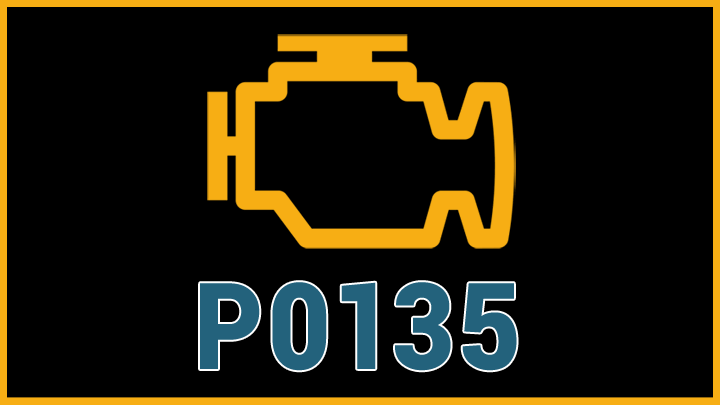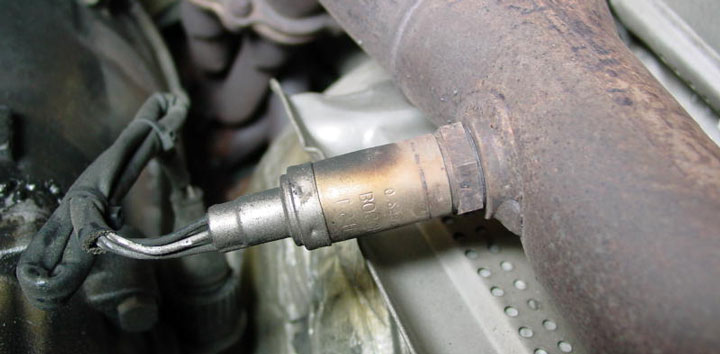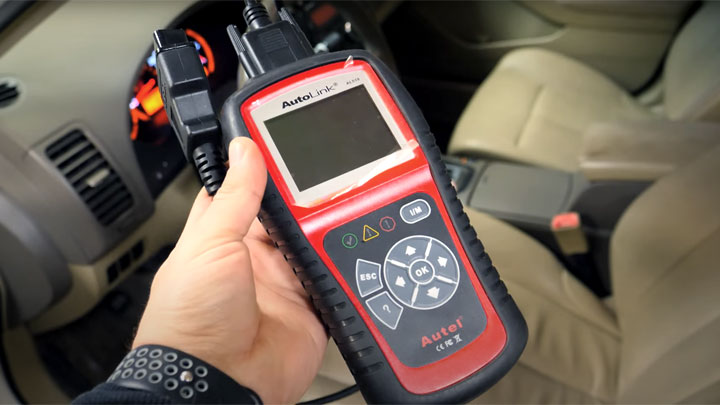P0135 Code (Symptoms, Causes, and How to Fix)
A frequent culprit of that frustrating check engine light is a P0135 code which is telling you that an oxygen sensor heater circuit is malfunctioning. Fortunately, this is a common trouble code that’s often easy to diagnose and repair yourself.
In this article, we’ll break down what the P0135 code means, what causes it, and what the proper troubleshooting procedure is to fix and clear the code.

What Does Code P0135 Mean?
Most modern engines have oxygen sensors to control the fuel-to-air ratio in the intake system. As mentioned, some of these sensors have pre-installed heating elements that reduce the time your engine system is in a loop, or a fuel-rich state designed to allow the vehicle to reach the proper temperature quickly.
When the oxygen sensor(s) detects the engine has reached optimal operating temperature, the fuel ratio is reduced to improve fuel economy and reduce emissions.
If the powertrain control module (PCM) doesn’t receive a signal from the heating element within sensor one of bank one, or the signal indicates a short or excessive resistance, the P0135 code automatically triggers.
Related: PCM vs ECM vs ECU vs TCM (What’s the Difference?)
Symptoms of Code P0135
The check engine light is often the only symptom of a P0135 code, as your vehicle can function with a faulty oxygen sensor heating circuit. However, there are occasionally other signs, including:
- The engine is slow to heat up
- Rough idle on start
- High fuel consumption
See Also: Code P0131, Code P0133, Code P0134, Code P0136, Code P0137, Code P0140, Code P0155, Code P0161, Code P2A00
Causes of Code P0135

Diagnostic Trouble Code P0135 doesn’t necessarily require the replacement of your front oxygen sensor. It can be triggered by other causes as well.
- Faulty connections or wiring on the engine’s oxygen sensor
- Damaged catalytic converter
- Faulty oxygen sensor
- The engine’s oxygen sensor has a vacuum leak
- Issues with the power control module
- Damaged engine coolant sensor
- Wiring has short circuit
Is Code P0135 Serious?
The P0135 error code is not a serious issue. You can drive your vehicle and don’t need to make repairs immediately. However, as it can lead to poor fuel economy and higher emissions, it is best to address the issue in a timely manner.
How to Fix Code P0135

As you diagnose your engine for code P0135, there are a few common mistakes to be aware of. For starters, don’t automatically assume that the code activated because your sensor is faulty. In fact, your engine could be having a mechanical problem like faulty wires or a leak in the exhaust.
It is always advisable to perform a full diagnosis of your engine before you decide to replace any parts. If you replace a few components and the error code P0135 still recurs, then it is better to take your car to a mechanic for a checkup to prevent more damage to your engine.
Here are simple steps you can follow to diagnose the P0135 code’s cause:
- Begin by ensuring all the wires that cover the engine’s oxygen sensor are secure and in good condition.
- Replace any damaged circuits, connectors, or wires, and clean everything.
- Then, clear the error code using your code reader, and perform a short road test to ensure the car has enough time to attain the desired operating temperature.
If the code reappears, here are a few more things to check:
- Ensure the exhaust system doesn’t have leaks and check for cracks and weak spots on the undersides.
- Inspect the engine ground thoroughly and ensure it has the right connection. If you notice corrosion, then you may have to install a new ground.
- Test the catalytic converter using a vacuum gauge. When the engine operates at the desired operating temperature, it should have a reading of about 18 Hg. Rev your engine and ensure the readings return to said level.
- Clean the catalytic converter.
- Check the fuse on the heater circuit. It is more common for the fuse to blow when there is a short circuit in your engine system.
If you are still unable to remove the code, replace the oxygen sensor. If the code persists with a new sensor, the issue may be elsewhere in your car’s electrical system or even be the result of a faulty PCM.
In that case, as mentioned, it’s best to take the vehicle to your mechanic for additional diagnosis.
How To Prevent Code P0135 From Recurring in Future
Also as mentioned earlier, damaged wires and short circuits are the most common cause of the P0135 error code. Check your engine regularly and ensure the wires don’t contact anything that can damage them and make sure they don’t overlap each other as this can easily cause the onset of short circuits.
Preserve your engine’s internal components by using anti-rust spray regularly. This is beneficial in minimizing corrosion on your engine, which can lead to wiring issues.
- Replace the Engine or Replace the Car? (11 Factors to Consider) - Apr 11, 2024
- Plastic Piece Dragging Under Your Car? (What It Is and What To Do) - Mar 21, 2024
- Timing Belt vs Timing Chain (What’s the Difference?) - Feb 27, 2024

Very handy,thank you very much, very well explained even me a layman have learnt a lot!